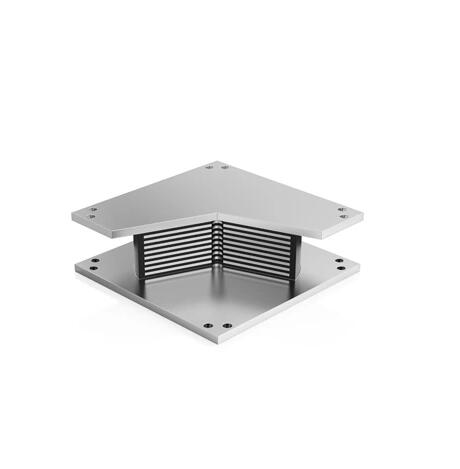Seismic Isolators For Buildings

وصف المنتج
Seismic Isolators for Homes
Seismic isolator bearing decouples the structure from its foundation during an earthquake by demonstrating high stiffness performance in vertical direction and softness in horizontal direction (shear and deformation and damping),serves the function of building isolation.
Types of Seismic Isolators For Buildings
Natural Rubber Bearing
Made of multilayer natural rubber and multilayer steel plates alternately, with good vertical bearing capacity and horizontal deformation capacity. (The support and connecting plate are vulcanized as a whole)
Lead Rubber Bearing
Made of multi-layer natural rubber and multi-layer steel plate alternately laminated and vulcanized, and the vertical lead core is embedded inside, which has good vertical bearing capacity and horizontal deformation capacity, and the lead core can absorb earthquake energy when plastic deformation occurs, greatly increase energy consumption and wind resistance of earthquake-isolated buildings. (The support and the connecting plate are integrally vulcanized).
High Damping Rubber Bearing
High Damping Rubber Bearings (HDRB) are a type of seismic isolation device used in the construction of buildings and bridges to protect them from the damaging effects of earthquakes. They are designed to absorb and dissipate the energy of seismic vibrations, reducing the forces transmitted to the structure.
Elastic Bearing
The sliding bearing is composed of rubber bearing, sliding material, sliding panel and upper and lower connecting plates. The bearing has sufficient vertical compressive rigidity and bearing capacity; After the bearing starts to slide, the horizontal force of the bearing is only related to the friction coefficient and vertical pressure of the sliding contact surface.
Friction Pendulum Seismic Isolation
It is composed of steel and friction materials. The natural vibration period of the upper structure is extended by the relative sliding of the spherical sliding surface. The appropriate radius of curvature of the sliding surface is selected according to the required natural vibration period. The damping coefficient is controlled by the friction coefficient; The sliding limit bolt is set to ensure the stability of the building in non-earthquake, and easy to cut in earthquake to ensure the deformation capacity.
Simple Support For Village And Town Houses
The engineering plastic plate is used to replace the laminated steel plate in the traditional bearing, and the improved product has the characteristics of light weight, high strength and good economy.
Seismic Isolators: A Key Component in Sustainable Building Practices
Seismic isolators for buildings play a crucial role in sustainable building practices. These innovative seismic isolators devices reduce the impact of seismic forces on buildings, enhancing their safety during earthquakes and reducing structural damage. By absorbing and dispersing energy, seismic isolators protect both the building and its occupants. Incorporating seismic base isolators into construction projects is an effective way to promote sustainability, as earthquake isolators ensure the durability and longevity of structures, minimizing the need for costly repairs or rebuilding. Embracing seismic isolators is a smart choice for sustainable and resilient building design.
FAQs of Seismic Isolators For Buildings
What is a seismic isolator and how does it work?
A seismic isolator is a device that is installed in buildings to absorb and dissipate the energy generated by seismic activities. This earthquake isolators work by providing a flexible and movable connection between the building and its foundation, allowing the building to move independently from the ground during an earthquake.

